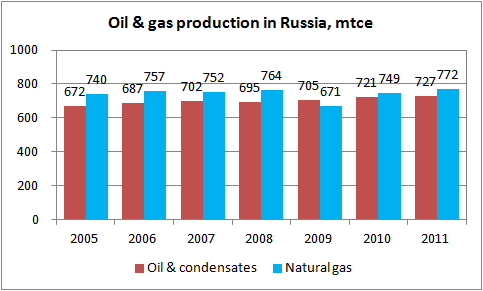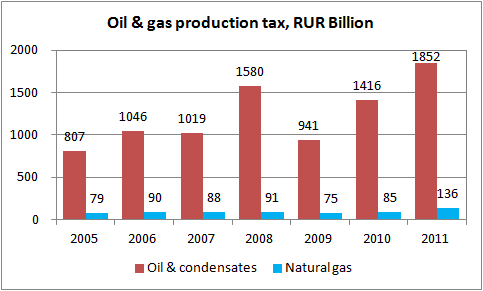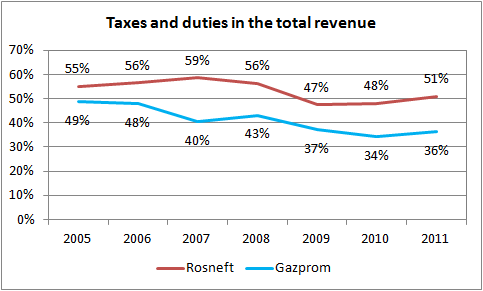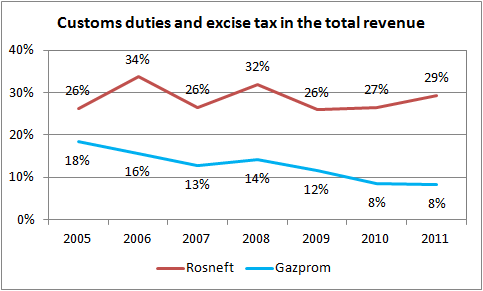|
Natural gas industry is one of the
least taxable sectors of the Russian economy. In terms of energy
content, Russia produces more natural gas than oil, but the
collection of gas production tax (severance tax) represents just a
fraction (7%) of that of oil. In 2011, the
total taxes and duties paid by Gazprom (RUR 1683 Bn, including the
profit tax) were lower than the total oil & condensate severance tax
- just one of the taxes paid by oil producers in Russia. Even at the
maximum
new rate of gas severance tax its total collection would
represent just about one-sixth of the total oil production tax.
|

Source: RF
Federal State Statistics Service |

Source: RF
Federal State Statistics Service |
|

Sources:
Gazprom, Rosneft |

Sources:
Gazprom, Rosneft |
Russia's gas export monopoly Gazprom
pays less taxes and duties than the state-controlled oil company
Rosneft. For example,
the share of
customs duties in the export revenue of Gazprom has dropped from
26% in 2005 to 16% in 2011. Note that in 2005-2011, the average
price of gas exported to the former Soviet Union and Europe has
increased from $149 to $351/mcm.
Despite the low taxation of the
Russian gas sector in general and Gazprom specifically, I do not
anticipate any dramatic change in the financial position of Gazprom.
Even at the gas severance tax of RUR 622/mcm (instead of the actual
rate of RUR 237/mcm), the share of taxes and duties in the total
revenue of Gazprom would have been about 46%, compared with 51% of
Rosneft. Moreover, the gradual increase of the gas severance tax
rate will be more than compensated by the planned growth of the
price of gas for Russian consumers. It may also be compensated by
new reductions of customs duties.
Gazprom plans to invest tens of
billions of dollars into the construction of new pipelines, and the
government will do its best to keep up the company's profitability
rate. As Vladimir Putin says, "we
need to act so as not to undermine the investment plans of our
producers".
Mikhail Korchemkin
East European Gas
Analysis
Malvern, PA, USA
April
30, 2012
Reproduction or use of
materials is allowed only with reference to East European Gas
Analysis or www.eegas.com
|